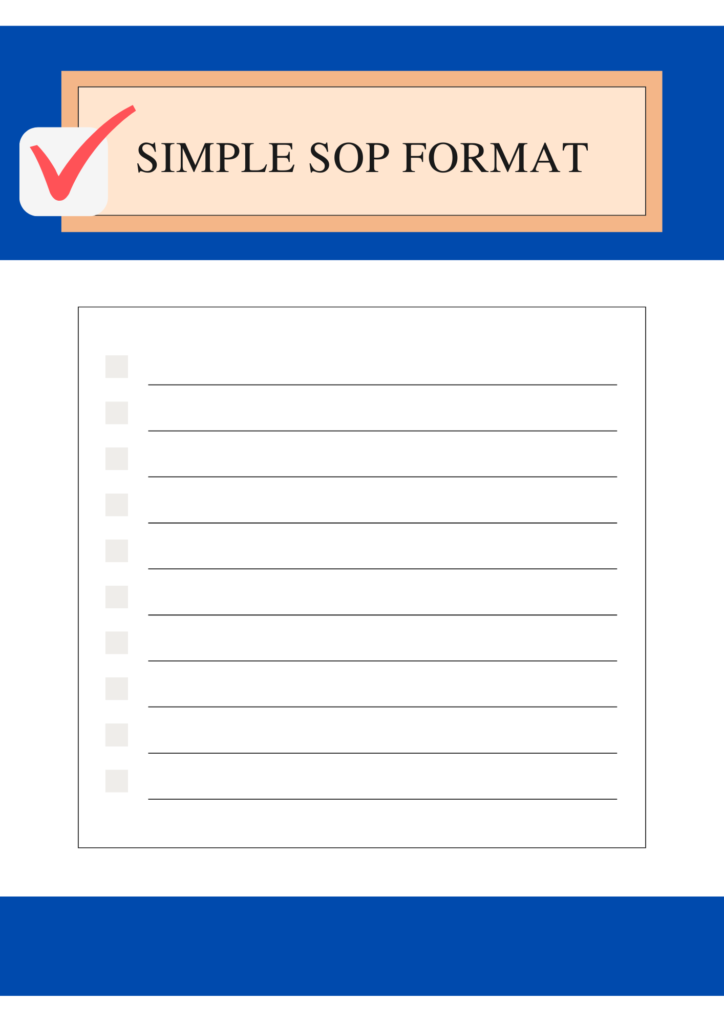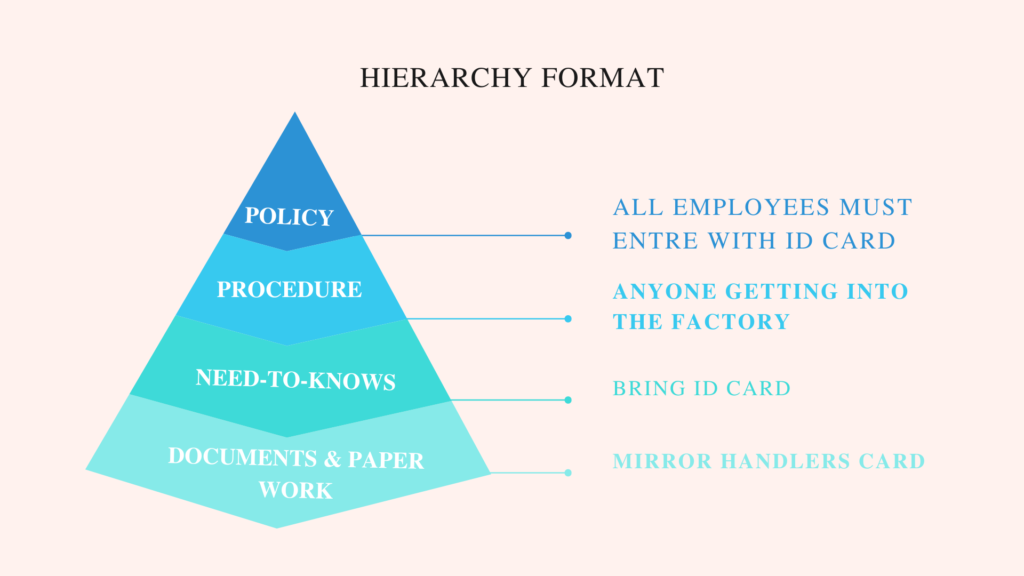Standard Operating Procedures (SOPs)

What is SOP?
A Standard Operating Procedure (SOP) is a set of written instructions that describes activities necessary to complete the task under industry regulations. A Standard Operating Procedure is a document containing step-by-step instructions. SOP means simply a step-by-step production line procedure used to make products and improve staff efficiency.
SOPs can create
- Efficiencies and therefore profitability
- Consistency in service
- Way to resolve conflicts
- Roadmap to resolve issues
- Minimization of errors
- First-line defense in case of defaults
This process is administered by a business advisory and consulting firm.
Why are standard Operating Procedures important?
Standard Operating Procedure aims to achieve efficiency, quality output, and uniformity of performance. This documentation is important because it allows the organization to standardize the process, and keep all stakeholders and team members on the same page.
It is a piece of instruction that all the team members will remain aligned and the organization will continue to work in a positive space. It gives an edge to the business.
SOP is important in the following ways.
- Assure adhesion to best practices
- Ensure consistency
- Enable proper onboarding and training
- Maintain organizational knowledge
The SOP Format
While creating a Standard Operating Procedure, decide the best format for your organization. Most common are simple and complex, depending upon your organizational needs.
Choosing the SOP format also depends upon the audience, purpose, and detail you need.
The following formats are used in the market.
1. Simple SOP(Standard Operating Procedure) format
A simple SOP format is best for procedures having low complexity and straightforwardness. A simple format is easy to digest and shows all your information well. Keep the document length to three to five sections and include;
- Statement of purpose
- Short Summary
- Step-by-step instructions with bullets
- Responsible person for each step


2. Hierarchical SOP format
This format is best for complex designs and is called the Complex SOP Format.
It includes a table of content, and headings to help organize the information. It also includes
- Statement of purpose
- Short Summary
- Step-by-step instructions with bullets
- Responsible person for each step
3. Flowchart SOP format
This format applies to both simple and complex procedures. A flowchart can vary in length and a few essential components it includes are;
- Statement of purpose
- Flowchart or diagram outlining various scenarios
- Responsible people for each step

Types of Standard Operating Procedures
These procedures communicate across all levels within the organization. They are categorized as Technical and Management SOPs.
Technical SOPs
Technical SOPs point to how to perform and complete a certain task. They are often in the form of work orders or preventive maintenance.
Management SOPs
Management SOPs point to how all procedures are created, detailed, maintained, distributed, and revised. It is a document explaining the implementation of all SOPs.
What is the Standard Operating Procedure Template?
The Standard Operating Procedure template is a document that the company uses as a starting point. A company might have Standard Operating Procedures managed by different people within the same organization speculating methods of completing a variety of tasks. The SOP template creates a single style and spacing, likely giving instructions to all the stakeholders and team members to follow those rules.
How to write the Standard Operating Procedure Template?
Building the SOP template makes it easy to write SOP for every task. The first step is to select the style and layout. Build a framework that contains the same style for the flow of information such as font style, and section spacing, and apply it to all other SOPs templates.
Building the section of your templates includes the following points.
-
Title
Every SOP has a unique title and selecting the title depends on the information you are going to give in.
-
Introduction
Some SOPs include the reminder of organizations’ commitment.
-
Scope of SOP(Standard Operating Procedure)
This section covers the purpose of SOP and the process. It also includes what information is necessary to follow.
-
Contacts
List roles, responsibilities, and contact information for coordination.
- Glossary
Include the glossary of terms if SOP includes particular languages.
- Step-by-step process
It is the section where we write the process step-by-step and includes flow charts or tables if any.
-
Checklist
Include checklists as they reflects an easy description.
Challenges of developing Standard Operating Procedures
Creating effective Standard Operating Procedures that are followed comes with challenges as well.
i) Categorized development
One of the main challenges that we encounter while writing Standard Operating Procedures is compartmentalization. This means that SOP may not include the necessary instructions that are encountered by lower team members but not the higher stakeholders. This can cause the ground-level team to run into a variety of obstacles that the executives may not have anticipated.
ii) Problems with Accessibility, Visibility, and Centralization of Information
Make sure that all stakeholders can engage with documentation whenever necessary. All your team members must have access to the same documentation across the board. Make sure that all team members are following the right documentation at all times.
iii) Lack of management and maintenance
Your team needs to be properly trained to implement the procedures in question. This means ensuring they have access to any equipment or other resources needed to complete the tasks defined within the SOP. With the improvements in technology, day-by-day advancement demands that your SOPs also need to be updated. Make sure to update them also. Following old procedures can be harmful as well.
You May Also Like

Challenging Liquidation Preferences
Liquidation preferences are terms that investors negotiate with a company when they invest. These terms specify what will happen if the company is sold or goes bankrupt. Typically, liquidation preferences give investors priority over other stakeholders, such as common shareholders...

Role Of Chief Financial Officer (CFO)
Any business’s growth and development are facilitated by expansion projects. They can aid companies in boosting sales, earnings, and market share. Yet, starting an expansion project can be hazardous and expensive, so organizations should consider its viability before moving forward...

Cost Optimization
The ongoing process of locating and eliminating the sources of wasteful spending, underutilization, or poor return is known as cost optimization. While reinvesting in new technology to boost company growth or increase margins, the practice aims to lower costs. Cost optimization aims to coordinate service delivery with the best client experience at the appropriate cost level...

Working Capital Management
Working capital management is a business strategy planned to ensure the best utilization of a business’s current assets and liabilities for the company’s effective operation and to maintain sufficient cash flow to meet future short-term goals. Working capital management refers to the set of activities that make sure the company got sufficient...
